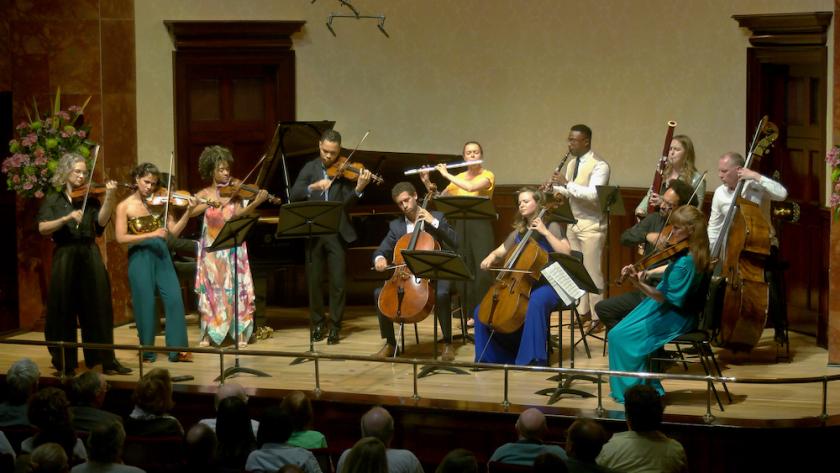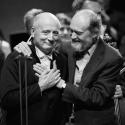Artist-in-Residence at the Wigmore Hall Hilary Hahn brought her residency to an end with a collaboration with the exciting Kaleidoscope Chamber Collective, a notably youthful and ethnically diverse group, who brought with them a notably more youthful and ethnically diverse crowd than the hall usually entertains.
The programme was American music, combining a couple of mid-20th century masterpieces with newer works by living composers. The older music largely came out ahead.
Although I have known and loved the Samuel Barber String Quartet for 30 years I had never previously heard it live. I don’t know why it doesn’t get played more: the central Adagio is one of the most loved pieces in the canon, but put in the middle of two turbulent and urgent fast movements it has even more impact. And hearing its fragility when played by four instruments, away from the safety blanket of the massed strings sound, allows the individual lines to come through. Cellist Tony Rymer and violist Juan-Miguel Hernandez both took their moments to soar above the violins, as the quartet pushed on to the climax.
The second half was built around Copland’s Appalachian Spring in its original 13-instrument version. Written the year after the Barber and similarly a founding text of classical Americana, it fizzes and sparkles where the Barber broods and laments. The ensemble operated without a conductor and were very secure, from Carlos Fereira’s silky clarinet solo at the beginning (reprised at the end) to Jane Mitchell’s unaffected and direct flute playing. As throughout, Hilary Hahn was happy to be prima inter pares, taking the lead but not dominating. Alongside her in the violins was Elena Urioste, Co-Artistic Director of Kaleidoscope, who looked to be having tremendous fun through the whole thing. Tom Poster at the piano was the lynchpin, his athletic contributions maintaining the forward momentum. And his glorious arrangement of Moon River as the encore found a Hollywood opulence from just 13 players.
As throughout, Hilary Hahn was happy to be prima inter pares, taking the lead but not dominating. Alongside her in the violins was Elena Urioste, Co-Artistic Director of Kaleidoscope, who looked to be having tremendous fun through the whole thing. Tom Poster at the piano was the lynchpin, his athletic contributions maintaining the forward momentum. And his glorious arrangement of Moon River as the encore found a Hollywood opulence from just 13 players.
Of the newer pieces the best was Jennifer Higdon’s Dark Wood (2001), a high-spirited celebration of the bassoon. Amy Harman gave a propulsive performance of a work which was at times enjoyably jagged and abrasive, but also lyrical in its central panel. It was great to see the bassoon given centre stage, the violin and cello offering decoration and elaboration, but definitely playing second-fiddle.
The only dud was the opener, Carlos Simon’s be still and know. Based on Oprah Winfrey’s trite final monologue on her final show (red flag!) it sounded like ponderous underscore for the moment when a Bake Off contestant is sent home early. It was the only misjudgement in the programming, a missed opportunity to showcase something worthwhile.
By contrast Jessie Montgomery’s Starburst was a short but entertaining amuse bouche before Appalachian Spring. Scored for nine strings, its sunny demeanour and motoric rhythm had very much the spirit of Copland or William Schuman, and the very great virtue of not outstaying its welcome.














Add comment